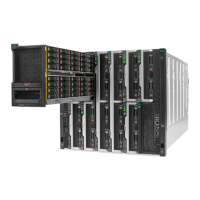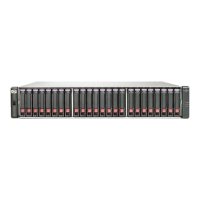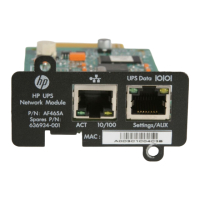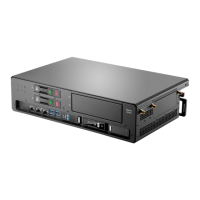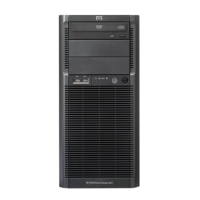Using SCS commands 45
Command syntax
A command can have four types of syntax: positional commands, positional parameters, keyword parameters, and
keyword values. The following examples demonstrate the syntax types.
The following Set Port command changes the baud rate and flow control settings for port 2.
> port 2 set baud=57600 flow=XONXOF
Table 4-3 Command syntax types in example command
Value Syntax
Port Positional command
2 Positional parameter that indicates the port number for the command
Set Positional command that indicates port settings are to be changed
Baud Keyword parameter, which is always followed by an equal (=) sign
57600 Keyword value indicating the baud rate value for the BAUD keyword parameter
Flow Keyword parameter, which is always followed by an equal (=) sig
XONXOF Keyword value
Not every command contains all syntax types. For example, the following command reboots the SCS.
>server reboot
In this case, both Server and Reboot are positional commands.
In most cases, one or more spaces separate positional commands, positional parameters, and keyword parameters.
For most positional commands, positional parameters, or keyword parameters, you only need to enter the first three
characters. The exceptions are:
• When you specify a terminal type with the Type parameter in the Server CLI command, you must enter all
characters.
• When you specify an authentication method with the Auth parameter in the Server SSH command, you must
enter all characters.
• When you specify control signal monitoring with the Power parameter in the Port Set command, you must
enter all characters.
• When you specify the console port in commands such as Port Set and Show Port, you must enter the
capitalized abbreviation CON.
Port names can contain up to 32 alphanumeric characters and hyphens and must be unique. Two ports on the same
SCS cannot have the same name. Port names are case-sensitive. The name cannot begin with a number or a space.
The following values cannot be a port name: alert, all, break, history, logout, names, nfs, or set. These values are
case insensitive. If the name contains spaces, enclose the name in double quotes whenever it is used in commands.
With the exception of user names, passwords, port names, and group names, commands are not case-sensitive. They
can be entered in uppercase, lowercase, or a combination. For example, all of the following commands are correct.
> PORT 2 SET BAUD=57600 FLOW=XON
> POR 2 SET BAU=57600 FLOW=XON
> por 2 Set Baud=57600 flow=xon
> port 2 set baud=57600 flow=xon
NOTE: User names and passwords are case-sensitive. These values are stored exactly as you enter them.
For example, the user name “Ann” must be entered with an uppercase “A,” and all other letters
lowercase. The user name “ANN” will not be accepted as the user name “Ann.” User names and
passwords must contain three to 16 alphanumeric characters.
Any syntax errors are displayed, and where applicable, the error is underlined.
In the following example, the keyword parameter “baud” is misspelled. Even if more than three characters are
entered, they must all be correct.

